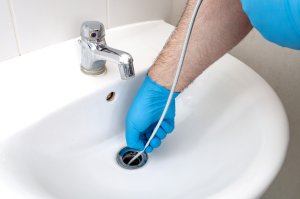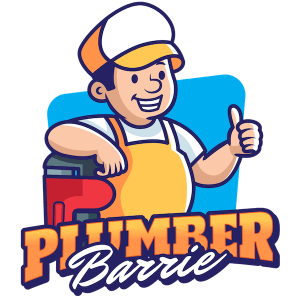How to Use a Sewer Snake?
To use a drain auger, take the following steps:
- Ensure the surface is clear of debris, use a regular or a dish soap, water and paper towels to clean the surface. Put on rubber gloves and googles-you will deal with a lot of dirt.
- Engage the cutting blades by rotating or moving them to a forward position on the front of the drill head.
- Lower the auger into the opening until it is touching the bottom of the drain pipe
- Slowly rotate auger clockwise while applying downward pressure on cable auger unit until cable end reaches 2 or 3 feet out from spool housing or until the clog has been cleared
- Stop rotation and apply hand pressure to the cutter head to assist in breaking up clogs if necessary.
- Continue alternating between rotating clockwise pushing down on the cutter head until the clog is broken up or cleared.
- Remove auger from the drain pipe and inspect the entire length of cable for broken strands, cuts, or damage that will prevent further use. To remove clogs use a plunger to free tube sections if they are frozen together. If the auger is hard to pull back through the pipe try reversing its direction through the line. You may need to apply lubrication such as petroleum jelly to help it pass freely through the pipe.
- Secure auger headcover in a locked position before storing the unit away for future use.
What Is a Sewer Snake?
There are a lot of different types of drain snakes you can buy in the nearest plumbing stores. Most clogs in household usually happens in shower drains, in the P-trap. There are no need to have a plumbing skills, every person can handle work with a sewer snake. A sewer snake is a long, flexible metal cable with a wire coil spring or auger like blade at the end. This tool is used to break up and remove clogs in household plumbing such as a toilet drain, shower drain, bathtub drain, kitchen drain, sink drain, or tub drain. Some essential maintenance and upkeep can help prevent future clogs, but sometimes a clog will occur, and you’ll need to use a sewer snake to clear it.
When Should I Use It?
If your drain is slow to drain water, you may need to use baking soda, chemical drain cleaners, a sewer snake, or any other drain cleaning tools. A clogged toilet or sink that doesn’t clear after repeated attempts with plunging may also require the use of a sewer snake. A lot of property owners usually rent or borrow a plumbing snake from most hardware and home improvement stores-depending on what kind of service is provided there, and they’re fairly inexpensive as far as plumbing tools. Some stores will even loan them out for free. Other times you might need to hire a professional plumber with experience using this type of tool so they can unclog your drain without damaging it.
How Do I Use It?
It would help if you always use caution when using a sewer snake. Wear gloves and eye protection to avoid injury, and be careful not to cut yourself on the sharp edges of the cable. Put petroleum jelly around the outside of the cable before inserting it into your drain so you can pull it out quickly after any clog is broken up or removed. Here’s how you do it:
- Your first step should be to remove any standing water in your toilet bowl by pouring one gallon of water directly from a bucket into the back-flush rim opening -not down inside the bowl. Keep track of how much time passes between this action and when water begins draining again to determine if it was effective in clearing the drain.
- If the water is still standing a long time later, your next step should be to turn off the shut-off valve under your toilet tank and flush it. Don’t try plunging the toilet at this time, as plunging without first turning off this valve could result in flooding up through the overflow tube and causing water damage inside your home. Cover any exposed soil pipe with a cloth or towel, so you don’t accidentally cut into it while using the sewer snake.
- Now you’ll need to insert the sewer snake into your drain opening and guide it down into the clog — which might take some effort if there is more than one bend in your drainpipe. Please note, that if it is electric, you will need a power drill to run the snake. The blade on one end of the sewer snake will help break up the clog. Then slowly pull the snake back out of the drain, being careful not to snag it on any sharp edges or complex objects that could cause damage. Wipe off the cable as needed while pushing it back into the auger drum. You may have to repeat this process a few times for your drain to clear completely.
Preparation
Wear protective gear, such as gloves and goggles. You don’t want to come into contact with the potentially dangerous gunk that could be stuck inside your drainpipe.
Prepare one gallon of water for flushing your toilet bowl. It is easier to clear out the bowl using this method before using a sewer snake on your pipes. Water will run down past any blockage, whereas plunging without adding water might not work if there’s already something stuck in your toilet trap.
Extend the Auger
Before inserting the sewer snake into your drainpipe, you’ll need to remove the head of the cable so that it can be extended to its full length. You should see a collar around where the rotating head meets the straight section of the line. Turn this collar counterclockwise until it comes loose, and slide off the entire rotating head by pulling on it.
Find the Clog
The sewer snake can now be inserted into your drainpipe. You may have to guide it around bends, but it should run freely within straight pipe sections. If you hit an object that’s too hard to push through with the blade on the end of the cable, you’ll need to back up the cable so that you can try another section again further along.
Break Down the Clog
You are likely to encounter resistance when using a sewer snake, especially if there is more than one bend in your drainpipe. Insert it as far as possible without causing any damage. When you feel resistance, start turning the rotating head clockwise. This will break up or free objects that are blocking your pipes and allow water to flow freely. Then slowly and carefully pull the cable back out of your drainpipe, being careful not to snag it on any sharp edges or dangerous debris that might still be stuck inside.
What Should I Remember when Using a Sewer Snake?
- You’ll most likely have to deal with dirty water, so make sure to wear protective gear like gloves and goggles.
- Keep an eye on how much time elapses between flushing your toilet bowl and water draining out of your sink or shower-the longer the time, the more likely it is that you have a clog.
- Don’t reuse your sewer snake if it has snagged onto rocks or other debris that wasn’t broken down during the process -dispose of these objects properly to avoid future clogs. Use caution when using this tool. Improper use could result in damage to property, including broken pipes inside walls.
Call our plumbers for professional help if you are not confident with or experienced using tools like sewer snakes. We will provide an estimate cost of any plumbing repair by phone!



